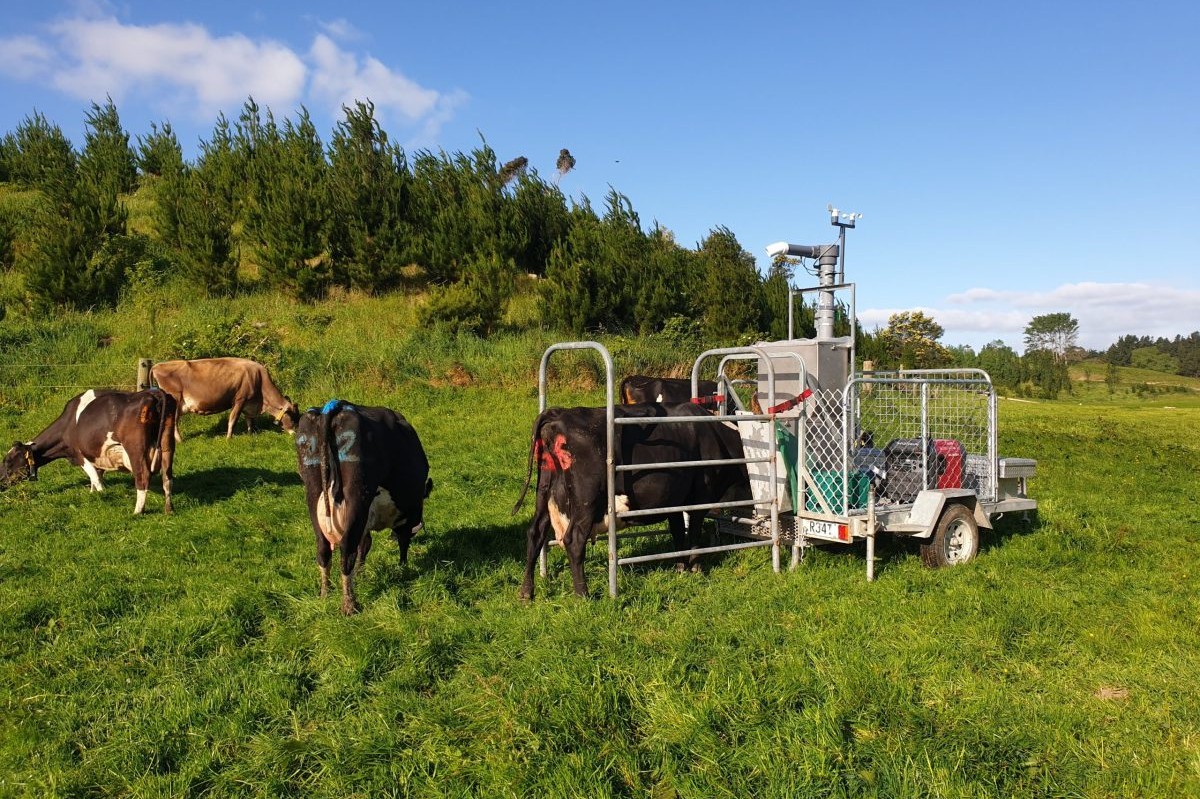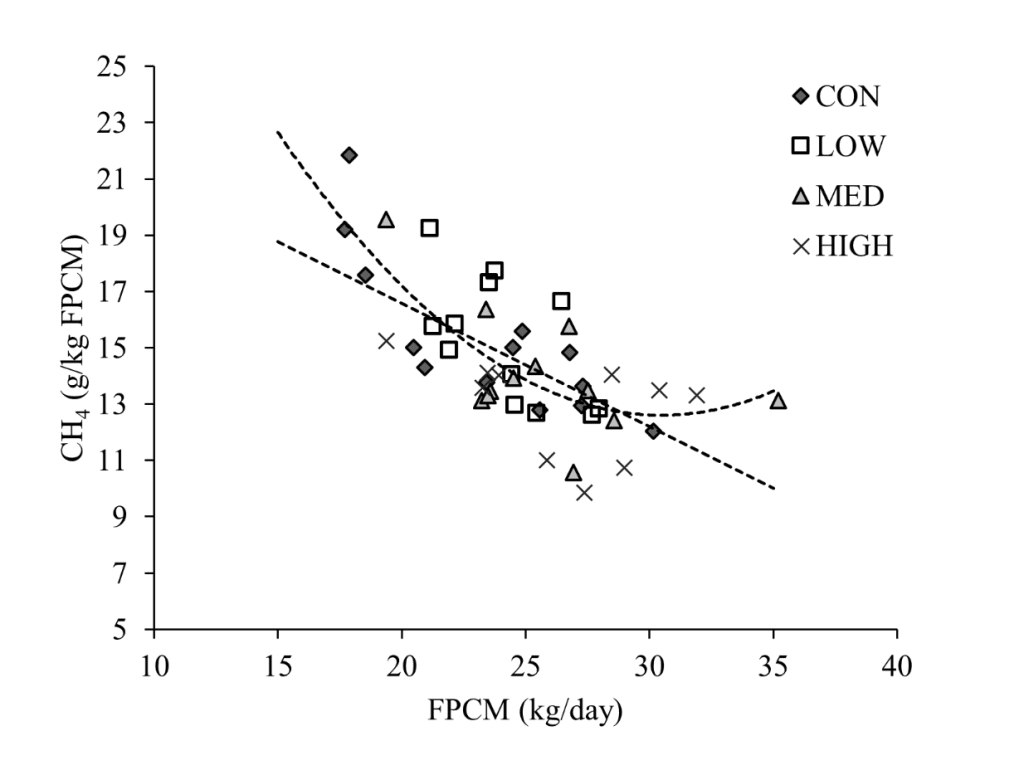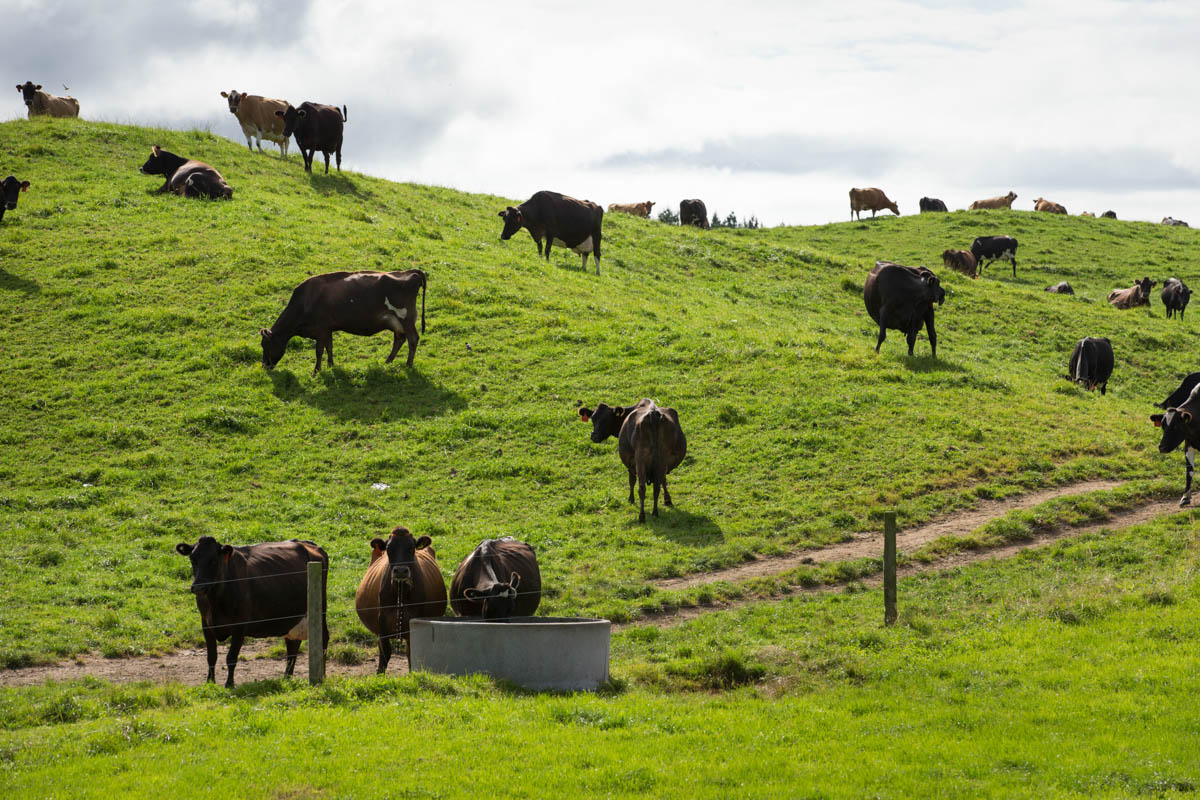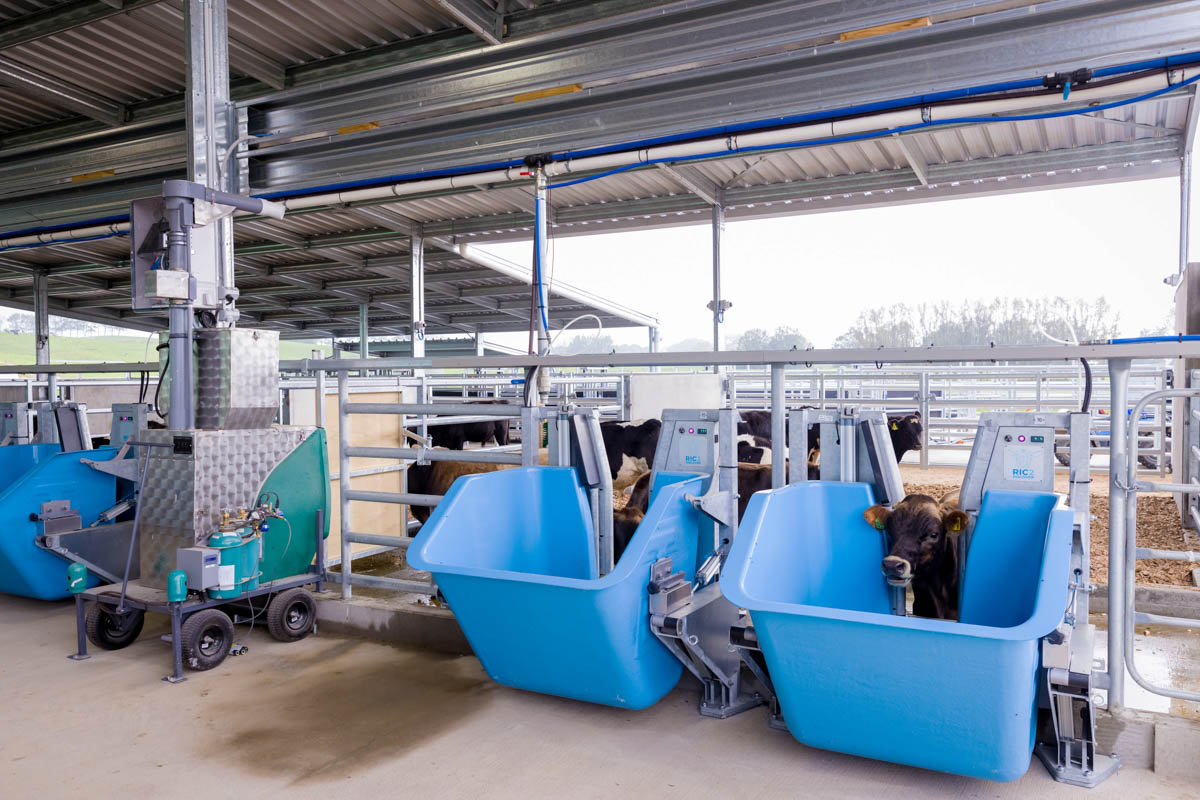Building a picture
AgResearch is looking at how concentrates alter methane emissions.
Words Anne Lee

A new study by AgResearch scientists that found cows fed concentrates in early lactation had a lower methane intensity (methane emissions per kg of fat and protein corrected milk, FPCM) than those on pasture alone, shouldn’t be seen by farmers as a sign to feed more concentrates in spring. The study has been carried out at Massey University in Palmerston North for the Ministry of Primary Industries (MPI) Greenhouse Gas Inventory Fund in an effort to gain more accurate information on methane emissions for New Zealand’s inventory calculations and modelling.
AgResearch Senior Scientist Dr Arjan Jonker says currently the prediction of methane output is based on a fixed level of methane output per unit of intake. “It can’t predict what happens on a per unit of intake basis if the type of feed is changing.”
The study involved 72 cows with 18 each fed a different feeding level of pellets at either 0, 2, 4 or 6 kg DM/cow/day.
The pellet was made up of barley grain, maize grain, wheat broll, palm kernel expeller, soya hulls, soybean meal and molasses and contained 11 megajoules of metabolisable energy (MJME)/kg DM.
The cows were also fed ad lib allocations of pasture at 10MJME/kgDM.
Units called GreenFeed were set up in the paddock to measure the methane emissions from each animal as they put their head into the device, enticed by a small amount of a different feed supplement.
At the highest level of pellet feeding, the amount of methane produced per kg of FPCM was 15% less than cows on pasture alone.
However, on a pure methane emissions basis there was no statistical difference which meant increasing the concentrate levels did not lower absolute emissions.
Arjan says it’s likely that because cows were being fully fed on pasture the addition of the higher ME concentrates created substitution where cows ate less pasture in favour of the pellets but didn’t increase their total intakes.
The energy intake of those cows eating the concentrate diet would have been higher and that may have led to increased methane efficiency – less methane emitted per kg FPCM.
That may happen in a high input situation, but typically cows are fed concentrates when pasture supply does not meet demand. In that case, it’s likely the effects on an intensity basis would be amplified because even more energy would be coming from the concentrate intakes. “We didn’t specifically measure the effect of supplementing when there isn’t enough pasture.”
Simultaneous to the field trial, scientists also ran a study indoors, in respiration chambers, and found cows on the higher concentrate rate did increase intakes, but the increased emissions expected by lifting intakes was offset by reduced emissions per unit of intake. “Something else is at play that’s reducing methane output per unit of intake. It may be that rumen fermentation changes which can change the amount of substrate available for methanogens (methane producing rumen microbes). They would normally utilise the hydrogen that’s being produced in rumen fermentation. “But if more propionate is formed instead of acetate and less hydrogen is formed then there’s less methane produced.” Hydrogen combines with carbon to form methane (CH4).
A co-author on the paper AgResearch scientist Dr Ajmal Khan says the timing of the study may also have had an effect with early lactation cows having high energy demands. “We want to repeat this trial looking at the impacts in later lactation too,” he says.
On the face of it, Arjan says the trial results could be viewed as supporting supplementation in early lactation as a way to reduce methane emissions on an intensity basis but the study didn’t take into account other greenhouse gas (GHG) emissions associated with feeding concentrates.
They could include onfarm carbon emissions from fuel use in feeding but also the emissions associated with growing and transporting the concentrates too.
Nitrous oxide emissions weren’t taken into account which may further enhance the emissions profile of concentrate feeding if the feeds are lower in protein and result in lower urinary nitrogen concentrations.
The study also takes no account of the cost benefit. “This was a study designed to inform the models and shouldn’t be seen as giving advice to farmers on their management,” Arjan says.
But for higher input farmers it may mean their emissions are in fact lower than they anticipated based on current farm models.






